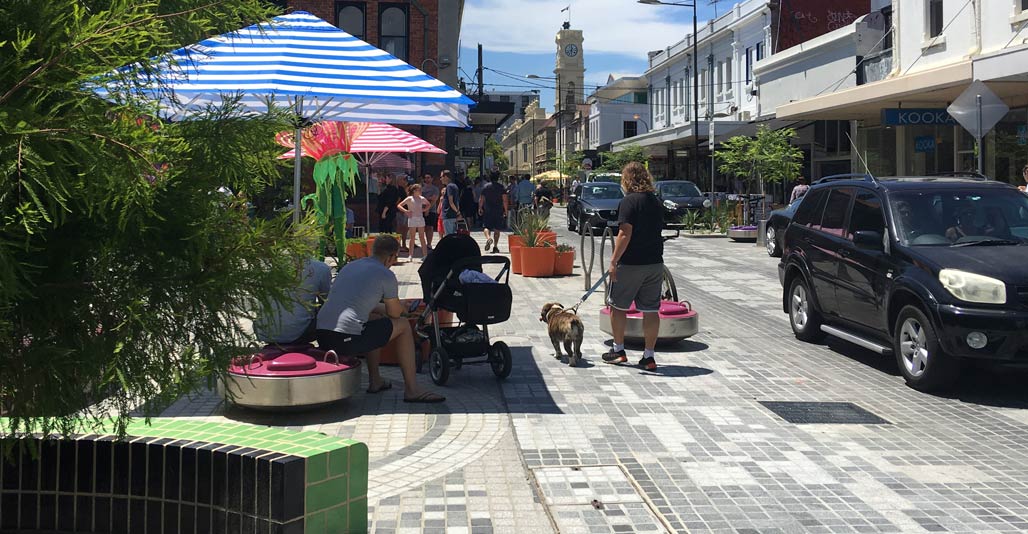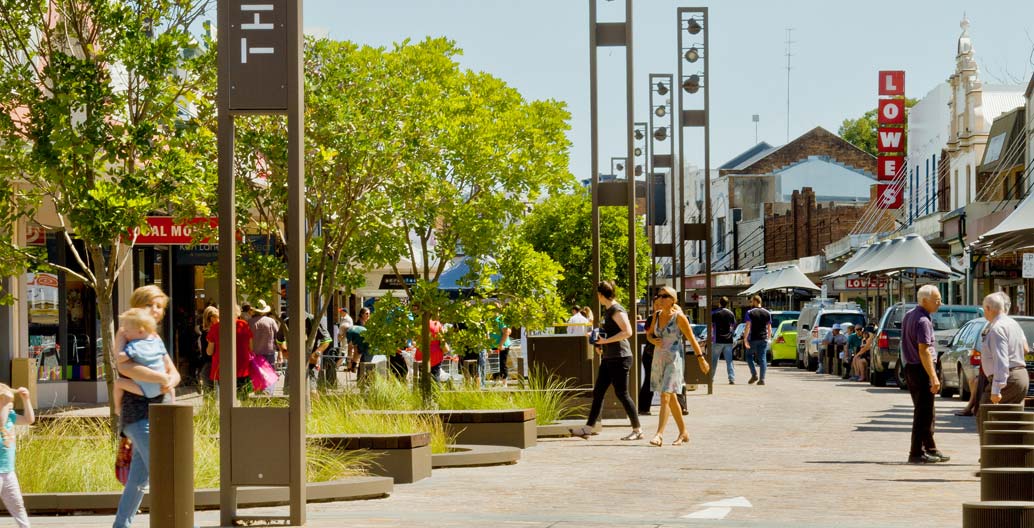
The Foreground five: June’s most-read stories
Our stories for the month delved into all things related to the street: Cassandra Chilton’s feminist streets, the unique identity of the Gold Coast under threat and efforts to re-people Canberra’s public realm. Here are the most-popular stories for June.
1. Streets are always political: in conversation with Cassandra Chilton
“People do need to feel safe in the street, but we know that statistically the least safe place for a woman is in the home.”
Cassandra Chilton is a landscape architect, artist and founding member of The Hotham Street Ladies. Here she contemplates the intersections between her creative worlds, feminist streets and uncovering Melbourne’s hidden grottoes.
2. The view from up here: changing visions for the Gold Coast
“A hallmark of the Gold Coast’s tall buildings is a leisurely vibe that is distinct from the more serious, CBD office or apartment building.”
The Gold Coast’s tall buildings are integral to its cultural identity, but recent development threatens to undermine what makes the city unique.
3. After the Griffins: reclaiming Canberra’s streets for people
“There’s so much capacity in our streets to bring them back to life and reimagine them as they should be.”
Two vastly different projects, recognised by the 2018 AILA ACT Awards, demonstrate the possibilities for re-imagining the legacy of the Griffins’ plan for Canberra and putting people back in the centre of the street.
4. Maitland on the river: reinventing the regional high street
“In the late 1980s, the long High Street mall was transformed into a pedestrian only zone. The strategy did not work.”
Like many regional towns, Maitland has suffered economic decline for decades. Repeated floods and flawed pedestrian planning made things worse. But thanks to recent changes, Maitland is reconnecting to the river and rebuilding its economy.
5. Imagine a city: Swanston Street Party and the greening of Melbourne
“There’s a big trend now, with urban designers talking about guerrilla urban design and things like that, almost as though it’s never happened before. Well, Swanston Street Party would have to be the biggest one.”
In 1985, Melbourne’s main thoroughfare, Swanston Street, was closed to traffic, covered with grass and a massive street party thrown in the name of the city’s sesquicentennial celebrations. For the party’s architects however, there was a larger agenda: to bring people back into the city.







